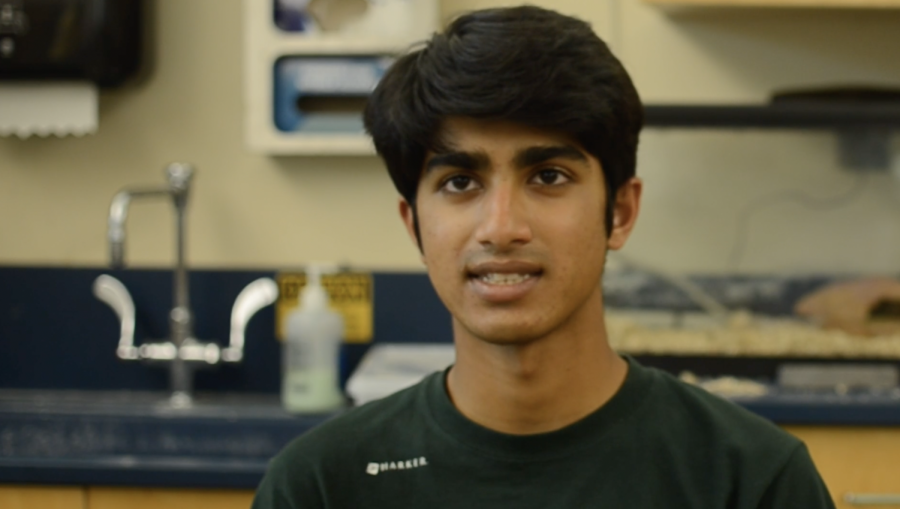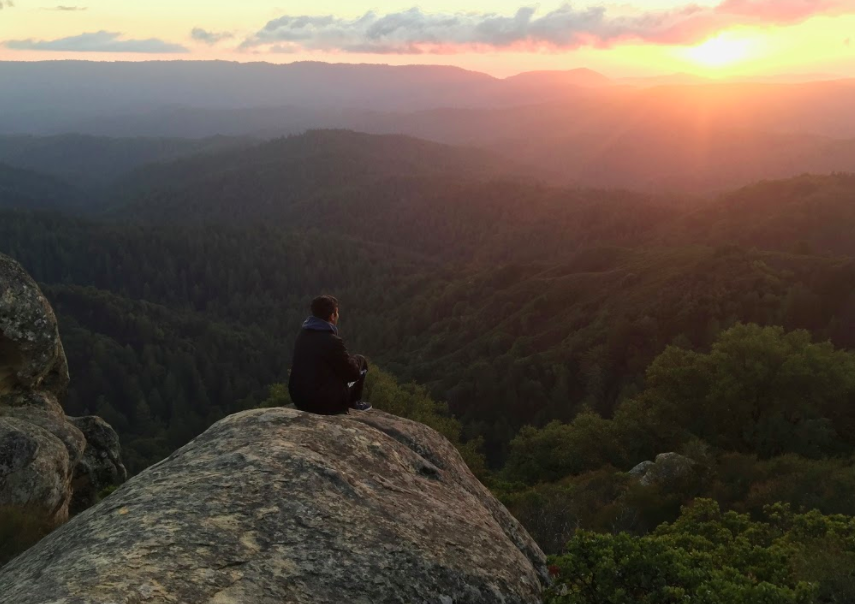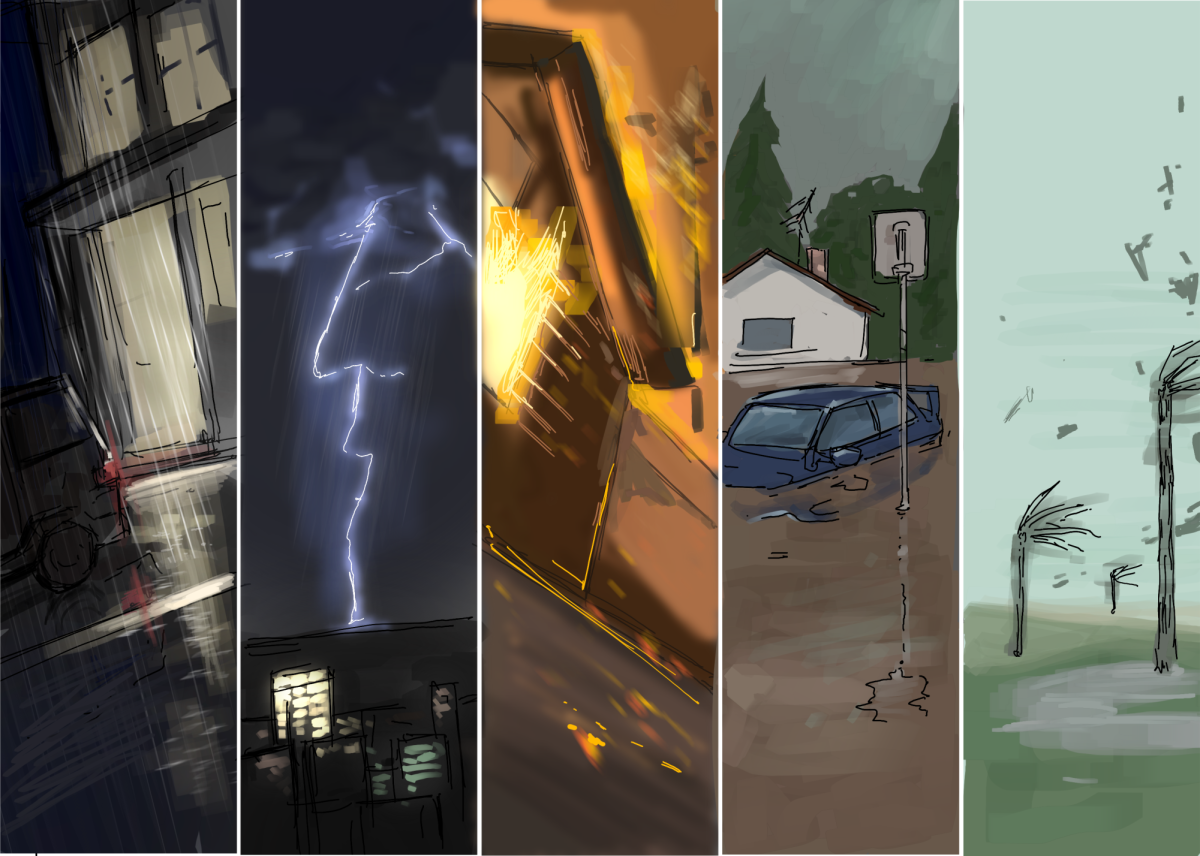From rising sea level to retreating glaciers, global warming has caused radical changes in our world’s oceans, forests and ecosystems. But few places across the globe have seen as impactful a shift in climate conditions than California, with its extensive coastline and variable meteorological conditions. Throughout the state, extreme weather events are becoming increasingly intense and common, damaging buildings and displacing residents from their homes in heavily populated areas.
The changing climate has only exacerbated the existing array of weather conditions in California, already having one of the world’s most extreme and unpredictable climates. With increasingly dire droughts, the state has seen less rain and hotter, drier conditions, leading to larger and more frequent wildfires, even in urban areas. The recent Eaton and Palisades fires in Los Angeles destroyed over 12,000 buildings in four square miles of high-density city blocks.
“Each year [the weather] gets weirder,” AP Environmental Science student Sophie Grace (12) said. “This year, there’s been a lot of unusual weather with wildfires. It’s super windy in Southern California, where they have huge wind advisories—that’s a result of climate change.”
California experiences intense floods and higher waves, which threaten the state’s numerous coastal buildings, including beachfront homes and hotels. A strong storm in December produced hurricane-force winds, record flooding and 60-foot waves, causing the partial collapse of the Santa Cruz wharf. Rising sea levels also exacerbate the gradual but long-term erosion of the California coastline.
Atmospheric rivers form often above the Pacific Ocean, bringing strong gusts and large amounts of rainfall from the equatorial tropics to the Bay Area in the form of long streams of water vapor. AP Environmental Science teacher Jeff Sutton explained how these rivers arise from humidity and heat in the atmosphere, intensified by the effects of climate change.
“The two big things that determine weather are pressure and temperature, and those two go hand in hand,” Sutton said. “We get these long tails of air movement that come often out of the tropics, and those long tails as the earth is spinning can make these rivers, and they can hold mind boggling amounts of water in the air.”
Precipitation and flooding from intense storms leads unprepared buildings to develop cracks in their foundations, while strong winds can cause damage in walls and roofs. In 2023, creeks and canals overfilled with heavy rain caused mold and foundation damage in the farming towns of Planada and Pajaro. Especially in regions with colder climates, rain and floodwater can freeze and expand in foundation piles, further weakening the structural integrity of buildings.
“The problem with extreme weather caused by climate change is that places that used to get 20 inches of rain now get much more than that, in stronger storms and more frequently,” Engineering teacher Anthony Silk said. “For example, you can have a place with homes that are built to be hurricane-safe for category one hurricanes, but now they’re getting category five hurricanes. And they’re just not prepared for that.”


















![“[Building nerf blasters] became this outlet of creativity for me that hasn't been matched by anything else. The process [of] making a build complete to your desire is such a painstakingly difficult process, but I've had to learn from [the skills needed from] soldering to proper painting. There's so many different options for everything, if you think about it, it exists. The best part is [that] if it doesn't exist, you can build it yourself," Ishaan Parate said.](https://harkeraquila.com/wp-content/uploads/2022/08/DSC_8149-900x604.jpg)




![“When I came into high school, I was ready to be a follower. But DECA was a game changer for me. It helped me overcome my fear of public speaking, and it's played such a major role in who I've become today. To be able to successfully lead a chapter of 150 students, an officer team and be one of the upperclassmen I once really admired is something I'm [really] proud of,” Anvitha Tummala ('21) said.](https://harkeraquila.com/wp-content/uploads/2021/07/Screen-Shot-2021-07-25-at-9.50.05-AM-900x594.png)







![“I think getting up in the morning and having a sense of purpose [is exciting]. I think without a certain amount of drive, life is kind of obsolete and mundane, and I think having that every single day is what makes each day unique and kind of makes life exciting,” Neymika Jain (12) said.](https://harkeraquila.com/wp-content/uploads/2017/06/Screen-Shot-2017-06-03-at-4.54.16-PM.png)








![“My slogan is ‘slow feet, don’t eat, and I’m hungry.’ You need to run fast to get where you are–you aren't going to get those championships if you aren't fast,” Angel Cervantes (12) said. “I want to do well in school on my tests and in track and win championships for my team. I live by that, [and] I can do that anywhere: in the classroom or on the field.”](https://harkeraquila.com/wp-content/uploads/2018/06/DSC5146-900x601.jpg)
![“[Volleyball has] taught me how to fall correctly, and another thing it taught is that you don’t have to be the best at something to be good at it. If you just hit the ball in a smart way, then it still scores points and you’re good at it. You could be a background player and still make a much bigger impact on the team than you would think,” Anya Gert (’20) said.](https://harkeraquila.com/wp-content/uploads/2020/06/AnnaGert_JinTuan_HoHPhotoEdited-600x900.jpeg)

![“I'm not nearly there yet, but [my confidence has] definitely been getting better since I was pretty shy and timid coming into Harker my freshman year. I know that there's a lot of people that are really confident in what they do, and I really admire them. Everyone's so driven and that has really pushed me to kind of try to find my own place in high school and be more confident,” Alyssa Huang (’20) said.](https://harkeraquila.com/wp-content/uploads/2020/06/AlyssaHuang_EmilyChen_HoHPhoto-900x749.jpeg)






